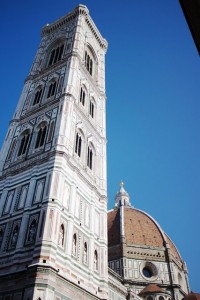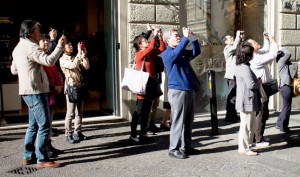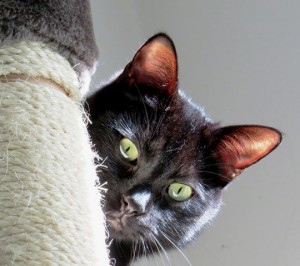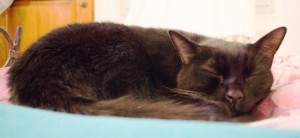Many of you have been asking me the same question for quite some time now: “if I’ve had my gallbladder removed, is it safe for me to take curcumin?” Today I can finally give you an answer. But first let’s take a look at a couple of things…
As you know from my “Side Effects and Warnings” Page (which you will find by scrolling down and looking on the right), curcumin increases the production of bile and also makes the gallbladder contract, which is great if you have no gallbladder problems. But if, for example, you already have gallstones, it’s a bad thing for your gallbladder to contract…In a nutshell, it can make things worse…
Bottom line: if you have gallstones, you should NOT take curcumin.
That said, if you do NOT have gallstones, curcumin will prevent their formation, which is excellent news for those of us who don’t have ’em. And, if you suffer from indigestion and/or gas and/or bloating, curcumin can be of much help (again, if you don’t have any gallbladder issues). This morning I came across a 2013 University of Genoa (Italy!!!) study that I haven’t had the time to read in any depth, but it states clearly that curcumin prevents the formation of gallstones: http://goo.gl/Adm4Cs (See paragraph titled: “Choleretic-cholagogue effect.” Interesting information. Well, I really must go back and read this full study when I have more time…)
But what the hey is bile? What are gallstones? I have to confess that these were mostly just WORDS that I have come across in my research. Until this morning, when I looked it all up, I didn’t really KNOW what it all meant and how it all worked. Well, I found the whole process rather fascinating, so I decided to have a quick, albeit rather simplistic (but after all, how MUCH do we really need to know about gallstones???) look at this topic:
Bile is a gross, bitter, dark yellow to dark green/brown fluid produced continuously by the liver. It helps us digest our food, especially digest FATS, and it is stored in the gallbladder, a pear-shaped, hollow organ located under the liver. The main purpose of the gallbladder is to store and concentrate bile (concentrate = make it less watery, thus more effective for the purpose described in the next paragraph).
Whenever we eat something, our gallbladder contracts, causing some of its concentrated bile to pass through the bile duct into the small intestine (= the duodenum) where it helps us digest fat. Note: if our bodies didn’t produce bile, we wouldn’t be able to digest the fat in our food (that condition actually exists, but it goes beyond the purpose of this post). Scary, huh? We really should treasure our bile…
Bile also removes certain waste products/toxins from our bodies, such as drugs (antibiotics, e.g.), cholesterol…and also bilirubin = a useless, toxic product that forms when red blood cells are destroyed. Well, okay, this is also a digression…an interesting one, though…and besides, it gives us an idea of how important bile is…
Oh wait, just one more thing: have you ever wondered why your poop is brown? It’s because of bile. How about that for a bit of entertaining trivia? 😉
Okay, let’s, er, move on quickly to gallstones, which are hard “stones,” as the word suggests, which vary in size and which form in the gallbladder. Most gallstones form when the bile becomes too full of either cholesterol or bilirubin, which begin clumping together…you get the picture (I actually almost posted some photos of gallstones, but they’re a bit too gross even for me…).
Anyway, without getting bogged down with too many details, most of these stones don’t cause any symptoms and are small enough to pass into the small intestine. But some become too big and can cause real problems — inflammation, blockages, bacterial infections. The obstruction of the bile ducts, for example, can lead to jaundice (= bile accumulates in the liver) or pancreatitis. Serious stuff.
Speaking of blockages, that made me think of the following: as we know, curcumin increases the flow of bile. But if the bile ducts are blocked, all this bile has nowhere to go except back into the gallbladder, where it will accumulate…Not good. Now I really understand why, if you have a bile duct obstruction, you shouldn’t take curcumin.
The “good” news is that humans can live without their gallbladders — in these cases, bile flows from the liver directly into the small intestine. It’s a bit more watery than the gallbladder’s concentrated bile, but it still helps us digest what we eat…
And now, finally!, we get to the question of the day: can we take curcumin IF we’ve had our gallbladder removed? The answer is YES. I recently contacted Prof. Aggarwal as well as a friend of mine who happens to be a well-known Tuscan urologist and whom I will call Dr. B. from now on. They both concurred that people who have had their gallbladders removed can indeed take curcumin. In fact, Dr. B. told me that he had his gallbladder removed years ago, and that he has been taking curcumin without any problems.
Of course, as with anything else, especially if I had any further concerns, I’d check things out with my doctor first…


 Whenever one of our other cats gets too close to Pammy, she emits the loudest and scariest screeeeeeech I have ever heard…I mean, it makes
Whenever one of our other cats gets too close to Pammy, she emits the loudest and scariest screeeeeeech I have ever heard…I mean, it makes  Last week we took her to our vet for a checkup, which went very well, except she has ear mites, which means that she has to be kept isolated from the other cats for about a week (ear mites, which are very common in outside cats, are very contagious to other cats). She also has a rather bad case of gingivitis, which I am attempting to treat with curcumin (mixed in with her wet food). We’ll see how that goes…
Last week we took her to our vet for a checkup, which went very well, except she has ear mites, which means that she has to be kept isolated from the other cats for about a week (ear mites, which are very common in outside cats, are very contagious to other cats). She also has a rather bad case of gingivitis, which I am attempting to treat with curcumin (mixed in with her wet food). We’ll see how that goes…
